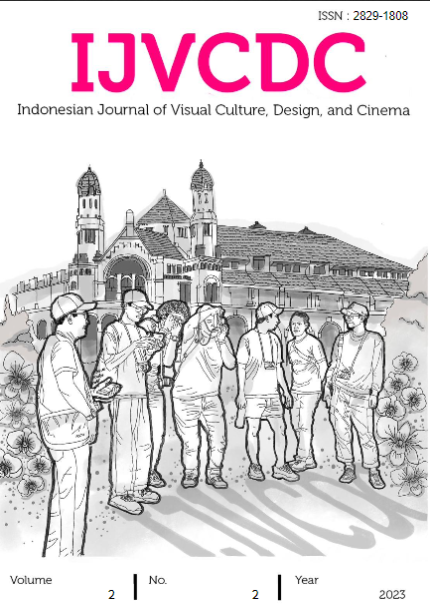Art, Ideality, and Reality: A Feminist Review through Griselda Pollock's Lens
DOI:
https://doi.org/10.21512/ijvcdc.v2i2.10751Keywords:
art, ideality, reality, feminismAbstract
This article explores the intricate connection between art, ideality, and reality from a feminist perspective, focusing on the influential insights of Griselda Pollock, a renowned art historian, and feminist scholar. By critically analyzing Pollock's work, this study uncovers the complexities of feminism within the art realm and its intersections with idealized notions and tangible realities. The article begins by contextualizing Pollock's contributions to feminist art theory and her approach to understanding artistic practices. It highlights how Pollock challenges patriarchal frameworks and amplifies the marginalized voices of women artists. Examining the concept of ideality, the study explores how idealized standards and societal expectations shape artistic representations and their impact on gender inequalities. Pollock's lens reveals art as a powerful tool for feminist resistance, disrupting dominant ideologies and asserting diverse narratives. The investigation of reality within the feminist review uncovers the interplay between art and the material world. Pollock's perspective illuminates how art reflects and responds to women's lived experiences, addressing social, political, and cultural realities. It showcases art's potential as a platform for feminist activism, shedding light on social injustices and advocating for change. This article emphasizes the significance of Pollock's feminist lens in understanding the dynamics of art, ideality, and reality. It underscores art's transformative potential as a vehicle for feminist critique and activism, challenging gender representation and power structures. The insights contribute to feminist art theory and its relevance in contemporary discourse. It highlights the ongoing need to engage with diverse feminist perspectives to critically examine art and its relationship to broader societal issues.
References
Butler, J. (1990). Gender Trouble: Feminism and the Subversion of Identity. Routledge.
Chadwick, W. (2012). Women, Art, and Society. Thames & Hudson.
Denis, D. (2003). "Aesthetics and Evolutionary Psychology" in The Oxford Handbook for Aesthetics. Oxford University Press.
Marinetti, F, review 'Poesia', 1905; as quoted in Futurism, ed. By Didier Ottinger; Centre Pompidou / 5 Continents Editions, Milan, 2008
Pollock, G. (2021). In Encyclopedia Britannica. Retrieved from https://www.britannica.com/biography/Griselda-Pollock
Pollock, G. (2021). In The Art Story. Retrieved from https://www.theartstory.org/artist/pollock-griselda/
Jones, A., & Pollock, G. (Eds.). (1992). Issues in Feminist Film Criticism. Open University Press.
Jackson, A (2021). The Origins of The Feminist Art Movement. Retrieved from https://daily.jstor.org/the-origins-of-the-feminist-art-movement/
Nochlin, L. (2015). Women Artists: The Linda Nochlin Reader. Thames & Hudson.
Parker, R., & Pollock, G. (Eds.). (2013). Framing Feminism: Art and the Women's Movement 1970-1985. Tate Publishing.
Parker, R., & Pollock, G. (Eds.). (2013). Old Mistresses: Women, Art, and Ideology. I.B. Tauris.
Painter, Colin. (2002). Contemporary Art and the Home. Berg Publishers, USA.
Pollock, G. (2003). Differencing the Canon: Feminism and the Writing of Art's Histories. Routledge.
Reckitt, H., & Phelan, P. (Eds.). (2012). Art and Feminism. Phaidon.
Robertson. J and Craig McDaniel (2005). Themes of Contemporary Art, Visual Art after 1980,
Art Gallery Online, 2018, 6th, May
Downloads
Published
How to Cite
Issue
Section
License
Copyright (c) 2023 RA Sekartaji Suminto

This work is licensed under a Creative Commons Attribution-NonCommercial-ShareAlike 4.0 International License.







